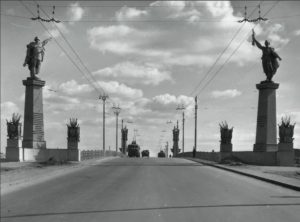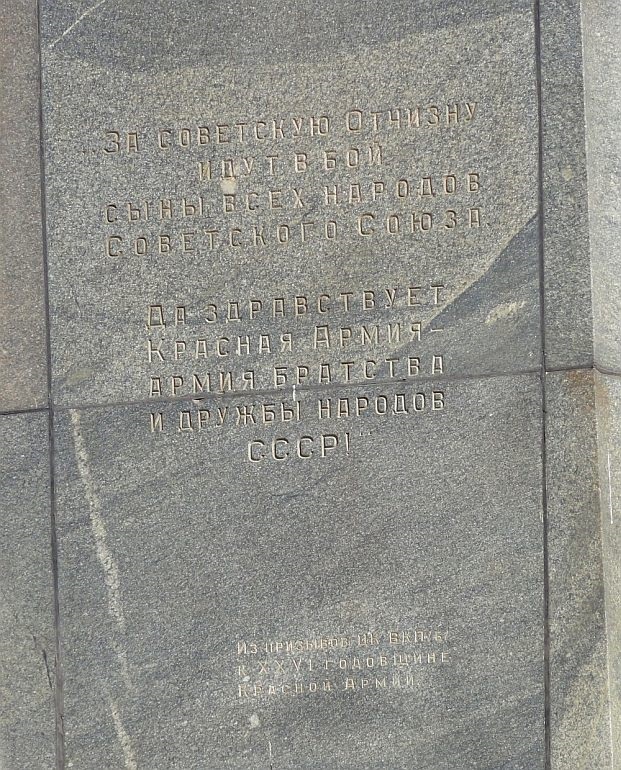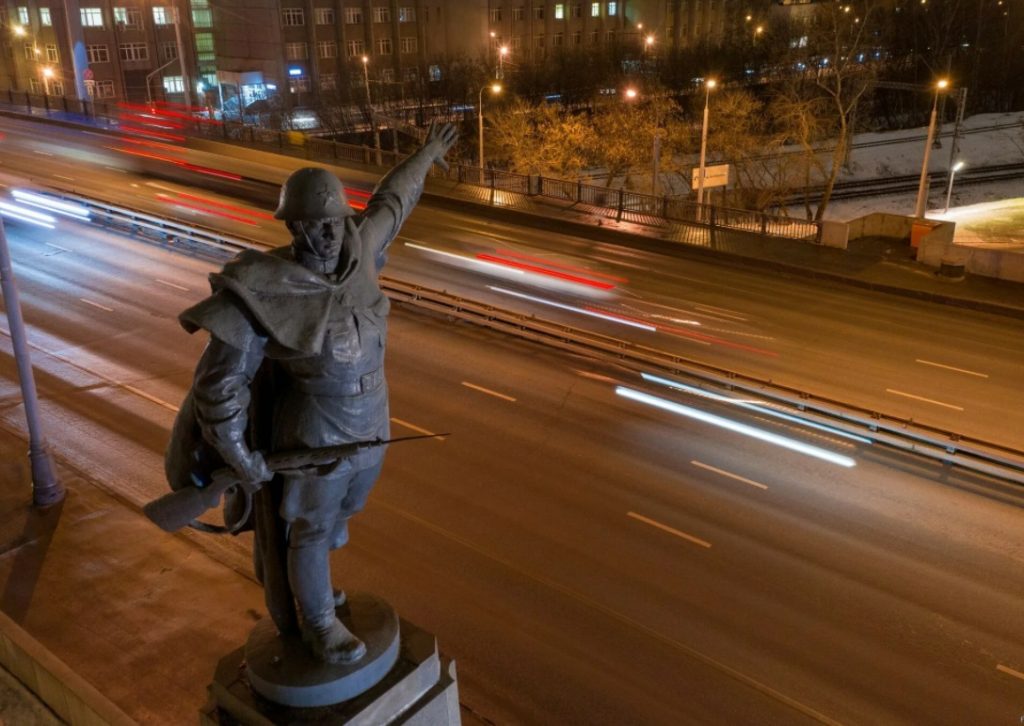«Triumph of Victory» monument

In 1941, during the defence of Moscow, there were three lines of fortifications in the Sokol area. During the days when the front was passing near Moscow, several German motorcyclists were detained on the Leningrad Highway overpass. Now this place is known as the Victory Bridge. The idea of the Battle for Moscow formed the basis of the sculptural composition of the bridge “Triumph of Victory”. Decorated with statues of male and female soldiers, the Victory Bridge became one of the very first monuments of Victory in the Great Patriotic War in Moscow. This bridge is one of the first Victory monuments in Moscow because its construction began during the Great Patriotic War. In 1943, when the decisive turning point in favor of the USSR came in the war, architect Dmitry Chechulin and sculptor Nikolai Tomsky began work on the design of a new overpass on the Leningrad Highway. Then this overpass was located on the outskirts of Moscow, in the north-western part of the city. It was in this direction that fierce battles took place in the autumn of 1941. Therefore, the idea of the battle for Moscow formed the basis of the sculptural composition of the bridge, called the “Triumph of Victory”. Initially, the overpass had only two lanes for traffic in each direction. In 1960-1961, the bridge was significantly reconstructed (actually rebuilt). The roadway of the bridge was widened to four lanes in each direction. The authors of the new bridge project were engineer I.Y. Arshavsky and architect K.N. Yakovlev. During the reconstruction the sculptures were installed on new granite pedestals along the edges of the bridge. Nevertheless, a part of the sculptural design (compositions of banners and wreaths) was lost. In the northern part of the bridge on high pedestals there are statues of warriors — man and woman. Sculptor Nikolai Tomsky attached special importance to their silhouettes. According to his plan, it was the expressive silhouettes of the sculptures that were supposed to create an atmosphere of tension and anxiety characteristic of the autumn of 1941. In the southern part of the bridge there are two sculptural and decorative compositions “Glory to Russian weapons”. The sculptural design of the Victory Bridge is an object of cultural heritage of regional significance.
Address: Moscow, Leningradskoe sh. (Leningrad overpass)


